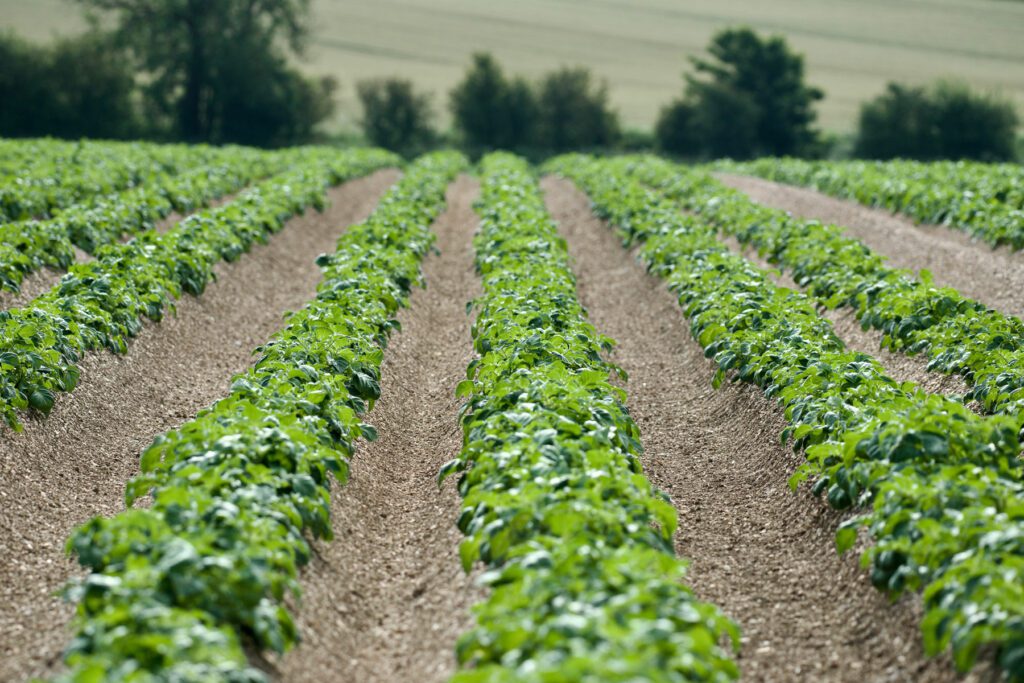Author
Agricultural land in the UK faces an immense balancing act – namely, addressing food security, climate change and nature. These interests have often been framed as competing; be it the roles of synthetic fertilisers and cattle in food production, or adjusting land usage to accommodate schemes such as re-wilding. Discourse on these issues is often highly emotive, pulling on economic, political and cultural chords.
Dustin Benton, Managing Director of Sustainability at Forefront Advisers, is a policy expert on the natural environment and food strategy. His ‘Three Compartment’ model suggests that food security, climate change and nature need not compete. The underlying principle: efficient land use that recognises the distinct potential of different parcels/swathes of agricultural land. With 70% of land in the United Kingdom dedicated to farming, the successful implementation of the model would have a dramatic effect on carbon sequestration while protecting food production.
Below, Dustin addresses the model in further detail, commenting on its interplay with the Environmental Land Management (ELM) schemes, dietary habits, and farmers’ sense of pride in the work they do.
What is the ambition behind the ‘Three Compartment’ model, and why is it helpful to divvy up agricultural land into compartments?
The idea is to try to make the most of what an individual parcel of land is good at, thinking about all the things society wants: good food, clean water, carbon removal, abundant wildlife, and rural culture. Because it’s nearly impossible for a single parcel of land to provide all these things at the same time, it’s helpful to separate land into three broad categories.
In England, the least productive 20% of farmland produces less than 3% of the food. Trying to make this ‘unproductive’ land – much of which is in the uplands – grow food means it can’t do other things. Using that land as woodland or peatland habitat, to store carbon, and to store water to reduce flooding and drought, makes the most of what it is good at. That’s the first ‘compartment’ – land for nature.
The second compartment is the most fertile soils which can grow lots of food. It’s very hard to grow lots of food and store carbon on the same land. So, we should forego carbon storage and habitats on this land and instead use it to grow lots of food.
What land usage does the model foresee for land which is neither the most productive nor least productive for food production?
The third compartment – land that is only moderately fertile – can provide some food and some habitat. Because it’s doing both food and nature, it’s not as good at either as the first or second compartment, but it’s important for farmadapted species and to produce the landscapes and lifestyles that define the character of the British countryside.
Ultimately, the ‘Three Compartment’ model tries to get the best mixture of ‘land sparing’ and ‘land sharing’ by doing a bit of both. If you run the numbers, you get more food, more nature, and more carbon storage by using three ‘compartments’ than other approaches.
The model therefore sees some agricultural land being taken out of food production to focus on the environment. Is a change in dietary habits anticipated by the ‘Three Compartment’ Model?
Eating less meat and dairy frees up more space for land sharing on moderately fertile land. The reason is that animals, while tasty, are inefficient: feeding 100 calories of grain to a cow produces just 3 calories of edible beef. Chickens, the most efficient farm animals, would produce 12 calories. If you eat a lot of animals, you need a lot more land than if you eat only a moderate amount.
Across the UK, eating 30-50% less would mean that the majority of farmland could be farmed at low intensity, in an organic or agroecological way. If we want to eat lots of meat, then you’re forced to intensify farmland to grow more meat and feed, as well as increasing the area of forest to offset higher farm emissions.
The ELM schemes, to some degree, were anticipated to address the friction between food production and environmental protections on agricultural land. In your opinion, do the ELM schemes achieve this?
The ELM schemes could have addressed this issue, but they did not as the last government got the balance between the three ELM schemes wrong.
Too much emphasis was put on the Sustainable Farming Incentive, which mostly supports highly (food) productive land with limited benefit for climate, nature, and for farmers in the uplands. Although it’s a bit of a caricature, Countryside Stewardship would be well suited to supporting moderately fertile farmland to produce a bit of food and some nature. Similarly, Landscape Recovery can support low productivity land to provide the climate and nature services that farmers currently can’t get paid for, and which often require large areas of contiguous land to be managed in a similar way – both for wildlife and to manage water at catchment level.
You and I have both attended events where the suggestion is that some farmers fall between the gaps of the ELM schemes, with little-to-no support aimed at the type of land they manage. For example, upland farmers. How could this be managed?
A better ELM scheme would have lots for upland farmers! Modelling I’ve been involved in suggests that, at a carbon price of £75/ tCO2, upland farmers reforesting or rewetting the peat on their land would at least double their incomes based on carbon payments in a Landscape Recovery scheme. For those farmers that wanted to, they could keep a small flock of sheep to graze in the forest – enough for the local butcher, but not enough to supply mince for supermarket moussaka!
A more philosophical one to finish on… You have previously floated the idea that food production, rather than the protection of the environment, underpins a farmer’s sense of pride in their work. Do you anticipate this being an obstacle to the implementation of the ‘Three Compartment’ model?
It’s a huge obstacle. Farming is a vocation – not just a job. It’s about more than money. Of course, farmers should be proud to grow food, but we do farmers a disservice by pretending that producing food at any cost, which made sense during the second world war, is what society wants today.
Farmers should feel pride in producing abundant nature and landscapes that store carbon too. Society should both pay them a fair price for doing all this, and respect the expertise needed to do it well.
Print article

